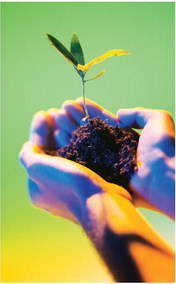How to graft a favorite plant

How to graft a favorite plant
Plants can be propagated in various ways, including grafting.
Grafting involves slicing off a piece from one plant and connecting it to another to create a new plant. Grafting can be an interesting hobby, and even novice gardeners can become skilled at grafting.
Grafting is actually botanical surgery. The grafted parts eventually grow together to form a single grafted plant, which will produce leaves, a stem, flowers or fruit on top known as a scion. The bottom part of the graft is known as the rootstock.
Production of grafted plants requires time, and grafting involves more than just propagating plants from seeds or cuttings. But the benefits of grafting include the propensity for grafted plants to flower or bear fruit more quickly than traditional plants. Grafting also can help a plant thrive, by selecting a root system adapted to a particular climate. Grafting is particularly advantageous when one wants to produce a plant that is an exact duplicate of the parent plant. Planting from seeds can produce inconsistent results.
If grafting seems like something you want to try, consider the following tips.
• Seek help from experienced grafters. Many grafters work at nurseries or in the research field.
If they’re too busy to work with you, you can likely find a video online that can show you the proper techniques.
• Invest in a quality, sharp knife. According to horticulture expert and teacher Dr. Malcolm Manners, grafting requires very sharp cuts. The knife needs to be razor sharp for it to be effective. Dull knives and cuts can sabotage your grafting efforts.
• Do test cuts first. Before you decide to work on a plant, select a trial stem to practice on. This can give you a better feel for making smooth, precise cuts.
• Purchase high-quality rootstock plants. The rootstock plant is the plant that provides a root system and base. Rootstock is bred to have certain qualities, whether it’s to put more plant energy into producing flowers or fruit or to be more durable.
• Choose compatible plants. Not every scion can be grafted on every rootstock. You likely will need a related species or genus for success. Speak with a horticulturist if you need assistance.
• Work quickly so that grafts do not dry out. As you become more experienced, this will be easier to do.
Grafting is a technique that can produce true plants and may help generate new but similar species.
Plant lovers may want to give it a try and see if grafting is for them.



Share